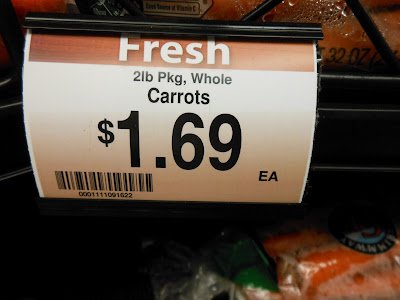In the olden days it was no big deal to get a new appliance. You opened the front door wide, they maneuvered it in and dollied it into the kitchen. But twelve years ago when we did just that with a new refrigerator, we hit a snag. We opened the front door wide, the fridge came in -- and stalled. All three doors into the kitchen were 29 inches wide, whereas the fridge was 31 by 33. What if you take the doors off the fridge? Nah, won't help.
We were sheepish -- it hadn't occurred to us that buying a refrigerator could be like building a boat in the basement. They took the fridge back and we promised to come by the next day and choose a new, smaller model. But fortunately that night our son the math wizard came over for dinner. After he heard our tale of woe, he skulked about the kitchen thinking, then asked us, Can the shelves in that closet come out?
Sure enough, he had discovered what two homeowners and three delivery guys had failed to notice -- we have a double closet that opens to both the kitchen and the dining room, and it is 34 inches wide. And yes, the shelves come out. So we re-bought the refrigerator we had sent back, cleared out the closet, and were pleased to see that with some careful maneuvering the fridge came in through the secret passageway.
So Sunday night we knew exactly what to do in preparation for our new appliance. Everything from the double closet migrated to the dining room table, the shelves came out in order. The gateway was open.
When the guys came with the new refrigerator we showed them the secret passageway. Nah, we can just take off the doors and bring it straight through.
Uh, don't think that will work -- twelve years ago it didn't.
But they already had their screwdrivers out and were busy disassembling both refrigerators. And guess what -- both of them went straight through the 29-inch door!
We were happy to get the furniture moving done so effortlessly. We were retroactively unhappy at the stupid and/or lazy Sears service guys who wouldn't take the doors off with the last fridge.
And right now we were unhappy about the dining room table needlessly full of kitchenware. With every dish I moved, I had contemplated how rarely if ever many of them got used. Yet they all had sentimental value for one reason or another and I was NOT about to throw them in the trash or even take them to the storage locker. They still need to be loved.
The pile looked like a garage sale. Which made me think -- what if it could also act like a garage sale? So we called up our son the cook and invited him to come over and choose some stuff to take home.

Two trips later he had filled up two big boxes, and two smaller boxes, plus some huge pots and serving bowls that rode home in the back seat unboxed. As he made his choices, we talked about which dishes had belonged to his grandparents, which had been brought home by his father from Europe in 1952, which silver bowls had been awards at a competition.
Best of all, he promised to love and use them.
Now my closet is clean, the shelves newly washed, the remaining dishes much more airily distributed.
The new refrigerator is purring away, much quieter than its predecessor. On balance, not a bad weekend's work.

















































